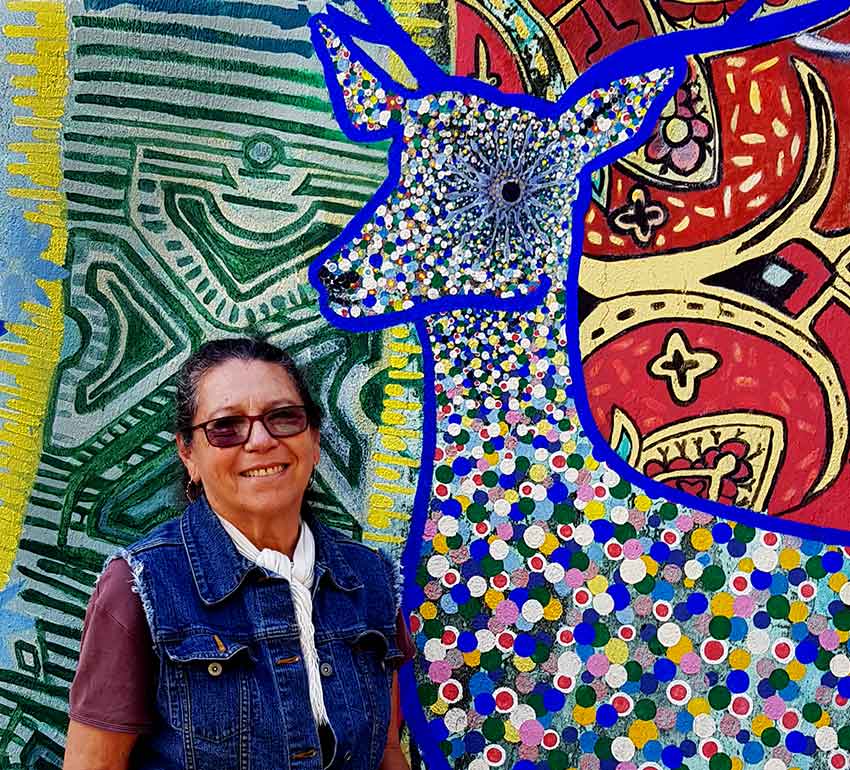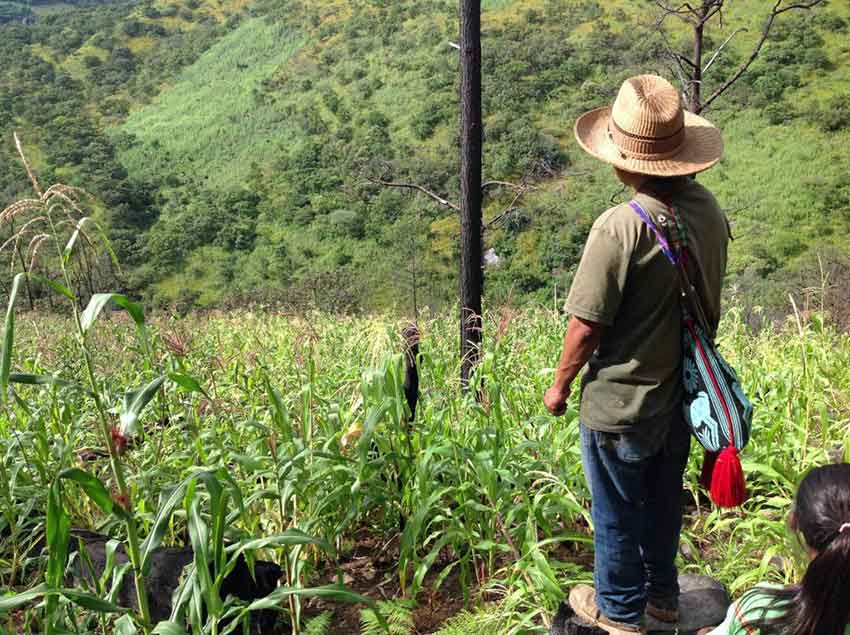Before nurse Rocio Echevarría founded Casa Huichol in Guadalajara to shelter members of Jalisco’s Wixáritari who had family in the public hospital, there was usually one option available to the hospitalized person’s loved ones.
Sleep on the street behind the hospital building.
But for the last 38 years, members of this indigenous group of the Sierra Madre Occidental, more well-known as the Huichol, have found lodging and food here, thanks to Echevarría.
The name Huichol, by the way, means “one who runs away,” while Wixárika means “person with a big heart who loves knowledge.” (The plural is Wixáritari.) It’s easy to see which name these people prefer; Huichol has been used for so many years, however, that it’s hard to eliminate it completely.
Echevarría’s story with the Wixáritari began in 1970, when she graduated from university as a nurse.
“At that time,” she told me, “the president of Mexico, Luis Echeverría, organized a conference in which he said that no previous government had ever opened a door to the indigenous people of Mexico but that now university graduates in the healthcare field from all over the country could carry out their servicio social in native communities.” Servicio social is the two years of required volunteer service that students must give to the nation.

Previous to 1970, she told me, the indigenous communities had been excluded from rights common to all other Mexicans: to education, to healthcare and to agricultural and cattle-raising programs. They had been considered separate and had been disregarded — and they themselves had made no effort toward integration.
“Those were also the years when women first started attending universities, and I had taken advantage and had become a nurse,” Echevarría said. “And now, along came this chance to get to know the native people of this country, so my mother said, ‘Hey, Rocio, why don’t we go to one of the Huichol missions?’
“Well, at first, I said, ‘No way,’ but then I ended up at the mission of Santa Clara, which is one hour from San Andrés Cohamiata, located 200 kilometers north of Guadalajara in very rugged territory in the middle of nowhere.”
Echevarría immediately fell in love with the Wixáritari and decided that this was exactly where she would work.
“The [federal] Health Ministry, however, said, ‘Hold on a minute! This is a federal project, and you need permission!’ So I had to go to Mexico City, where I told them I’d like to do my social service in the health center of San Andrés Cohamiata. It turned out that they were very surprised because absolutely no one else had shown the slightest interest in working in that isolated place.”
With the blessing of the Health Ministry, she went back to San Andrés Cohamiata for the next six years.

“It was a very strong experience for me. It changed my whole outlook on health and medicine. I discovered that salud [health] is very, very relative,” she said. “That little town had never had a doctor in its entire history, but everybody was still alive! OK, they had plenty of health problems like fungi, parasites, fleas and lice and lots of ticks. And they suffered from epidemics; influenza would appear, and it would tear through the community. Some would die. But in the end, most of them survived. And there they were!”
Over time, Echevarría grew close to the residents. It was then that she began to know the people who had been taking care of local health problems long before her arrival: the marakames (medicine men, or shamans).
“The marakames have an extraordinary ability to see an infirmity holistically, even if it’s a case of ticks or fleas,” she said. “They help you refocus on your problem, to see it in a wider context so that you can transcend it. If you really know what the problem is, you can resolve it. Observing the marakames at work led me to believe that the majority of diseases are psychosomatic.”
Echevarría believes that her fellow nurses and doctors are missing something that the marakames possess.
“They are psychiatrists and psychologists. They know how to deal with psychic and spiritual problems without making you feel that you’re crazy, without giving you tranquilizers or some drug that saps your energy, keeps you drowsy all day and takes away your will to fight,” she said. “You go to them and say, ‘My husband left me,’ and they show you that you are passing through a bad moment but that you’re not crazy.

“The marakames taught me that the most important thing … is that I need to be well-centered, perfectly well-centered, in my totality. Really, I wish that we had people like them in [the medical] profession. The marakame is like an M.D., a priest and a psychiatrist all rolled into one — and he’s a member of your community, a neighbor whom you know.”
Another discovery she made during her 10 years of work in remote Wixárika villages related to the traditional indigenous diet.
“Today we have severe health problems that the COVID pandemic is pointing out to us,” she said. “All the people who have died of COVID were already damaged. Their bodies were not fortified because we have replaced alimentación [nutrition], with comida [food].
“But the Wixáritari still have their coamiles [plots of land where corn, beans and squash grow together]. They plant their corn — real corn, not genetically modified corn — and they eat their beans, wild fruits, camotes del cerro [mountain yams] and mushrooms in the rainy season. And all these foods are really nutritious.”
Echevarría says that she has come to the conclusion that “the really healthy person is the person who is equilibrado — balanced and centered. You can solve your problems, and once you do, your mind can rest, your body can rest,” she said.
“We eat a lot,” she added, “but very little of it is healthy. They [the Wixáritari] eat little but with complete nutrients.”

Casa Huichol has three dormitories with 36 beds. “Here, we receive all the people that the Health Ministry sends to Guadalajara for surgery, for hemodialysis, for cancer treatment,” she said, “and we receive them free of charge.”
Besides providing shelter and food for family members who accompany a patient, Casa Huichol also accommodates people who are released from the hospital.
“Very frequently, the patient is told to come back in a week or in 15 days for a checkup,” she said. “So here is where that person stays until they are free to go back to their village. They eat here, they bathe here, they wash their clothes. From day to day, Casa Huichol typically cares for 25 or 30 persons.”
Running the operation keeps Echevarría on her toes.
“It’s a dance,” she said. “At any moment, some people are leaving, others are arriving and some are long-term residents — children who are undergoing rehabilitation, for example. Some of them might stay here for five years easily.”
“If it weren’t for us,” she explained, “they wouldn’t go through with the entire rehabilitation program and they would end up being a burden to their family and their community. Those recuperating from cancer are also long-term. These people need to follow their complete treatment protocol, which can be extensive. Since they don’t have a place to live in Guadalajara, this becomes their home.”

Everything that goes on at Casa Huichol depends either on the sale of Wixárika arts and crafts or on donations. Fortunately, the Casa De Salud Huichol website has big buttons you can easily click on (even if you don’t speak Spanish), should you like to help them out. Casa Huichol is also on Facebook, the easiest place to find out which craftwork is currently available.
And, yes, they can ship to anywhere in Mexico or elsewhere.
The writer has lived near Guadalajara, Jalisco, since 1985. His most recent book is Outdoors in Western Mexico, Volume Three. More of his writing can be found on his blog.




